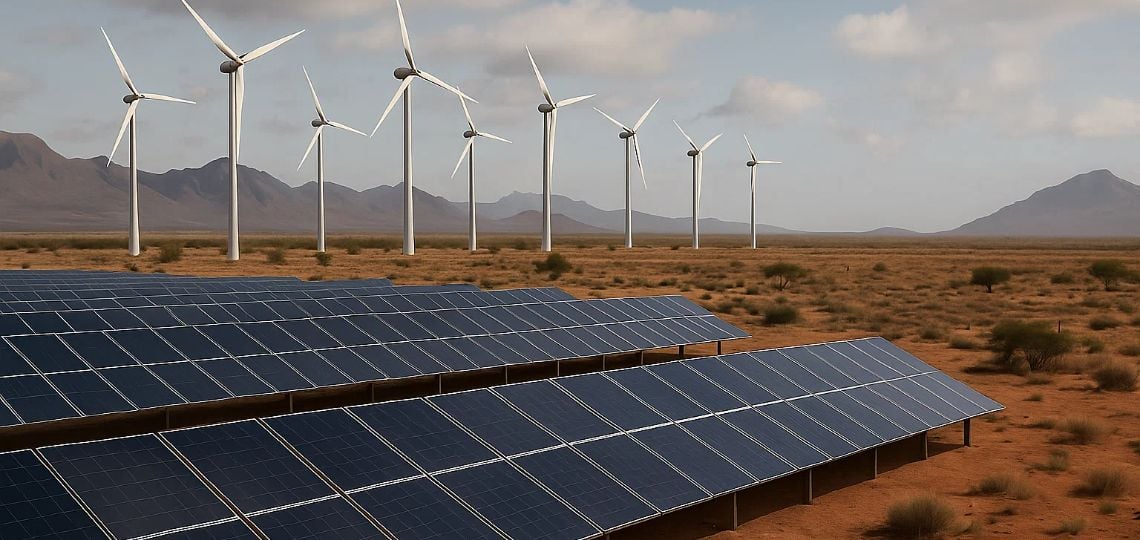
Africa’s Private Renewable Surge: Inside Q3 2025’s $1 Billion Funding
Private investment in Africa’s renewable-energy sector surged in Q3 2025, with 12 deals worth over $1 billion signaling growing market maturity. From South Africa’s landmark Red Sands battery project to innovative mini-grid financing in Nigeria, investors are backing scalable, storage-ready clean-energy solutions. Yet, Africa still captures just 2 % of global clean-energy investment—highlighting both its progress and the massive financing gap that remains.
In the third quarter of 2025, private renewable-energy investment across Africa quietly reached an inflection point. Though just 12 transactions made the cut, they carried a combined $1.08 billion in disclosed financing and nearly 300 MW of new renewable capacity—a sign that private capital is no longer waiting on the sidelines of the continent’s clean-energy transition.
A Quarter of Fewer Deals but Bigger Bets
Between July and September 2025, deal flow slowed but ticket sizes rose sharply.
July led with five transactions totaling about $503 million, buoyed by landmark closings like Globeleq’s 153 MW Red Sands battery project and CrossBoundary’s Kamoa-Kakula solar-plus-storage financing in the DRC.
August and September together contributed roughly $575 million, including Senegal’s Teranga Niakhar solar-storage plant and Norfund’s NOK 850 million (≈ $78 m) equity injection into South Africa’s Anthem platform.
The concentration of financing in large-scale, technically sophisticated projects marks a maturation of private investment appetite.
Solar Still Reigns, but Storage Steps Into the Spotlight
Nearly every deal involved solar PV, often paired with battery energy storage. The Red Sands facility—the first standalone BESS to reach financial close in Africa—embodies a shift toward dispatchable renewables that can stabilize weak grids. Hybrid solar-plus-storage projects in Mauritius, Senegal, and the DRC further underline investors’ interest in flexibility and reliability, not just capacity.
Even small markets are catching the wave: Mauritius’ US$99 million Stor’Sun financing and Seychelles’ 5.8 MW floating solar demonstrate how island economies can attract private capital when long-term PPAs and stable regulation are in place.
Financing Innovation at the Grassroots
Beyond utility-scale assets, Q3 2025 also showcased creative financing models for distributed renewables:
Husk Power secured Africa’s first revolving local-currency facility for community mini-grids in Nigeria—a ₦5 billion (≈ $3.2 m) structure denominated in naira.
Solarise Africa received a US$3.3 m mezzanine investment from Mergence to accelerate commercial & industrial (C&I) deployments across the continent.
These smaller but strategically significant transactions highlight how local-currency and mezzanine structures can de-risk projects, reduce FX exposure, and draw domestic investors into clean-energy growth.
Southern Africa Leads—But the Map Is Widening
South Africa dominated the quarter with three major deals (Red Sands, Mulilo, Anthem), reflecting its relatively mature renewable market and accessible financial system. Yet the pipeline stretched across Kenya, Zambia, DRC, Mauritius, Senegal, Seychelles, and regional platforms, suggesting an emerging continental spread of bankable renewable projects.
Blended Capital on the Rise
While the focus was private finance, many deals displayed blended characteristics. Senegal’s Teranga Niakhar plant combined equity from Energy Resources Senegal with debt from regional commercial banks like BOAD and BICIS, showing that African lenders are stepping up. Likewise, the Anthem platform’s backers—Norfund and KLP Norfund Invest—demonstrate how public-private vehicles can crowd in institutional capital and derisk early-stage portfolios.
The Numbers in Global Context
Africa’s $1.08 billion in private renewable financing for Q3 pales against Mercom Capital’s estimate of $6.5 billion in global corporate solar financing over the same period, and the IEA’s projection of $2.2 trillion in global clean-energy investment for 2025. Despite progress, Africa still attracts only around 2 % of global energy investment. The gulf underscores how much untapped potential remains—and how crucial policy reform and local-market depth will be.
Lessons from Q3 2025
The quarter’s data reveal a changing landscape:
Energy storage has arrived as a mainstream investment class.
Local and regional lenders are gaining confidence in renewables.
Financial innovation—from mezzanine funding to local-currency debt—is unlocking new market segments.
Yet scale remains limited, and a handful of countries continue to capture most of the capital.
Looking Ahead
Africa’s private renewable financing ecosystem is evolving from pilot projects to platforms, from concessional dependency to commercial repeatability. To sustain momentum, governments and regulators must simplify licensing, strengthen offtake frameworks, and deepen domestic capital markets.
If Q3 2025 signaled anything, it’s that private investors now see African renewables not as a frontier experiment—but as a viable, investable asset class with continental relevance.